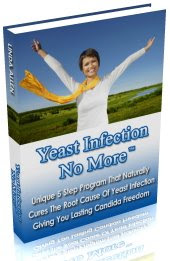The most commonly know yeast infect ion is caused by the Candida Albicans fungus. This is very often in the form of a vaginal infection and is normally called thrush. A vaginal yeast infection is actually not the only yeast infection you can get as it is possible to get one on any area of your body and males are not excluded!
Yeast infections are infections confined specifically to the skin or mucous-like membrane, caused in human beings by a genus of fungi called Candida. It appears in laboratory-cultured agar plates as large, round colonies colored white, cream or whitish-gray. One of its most famous (or rather infamous) species is Candida Albicans, though it must be noted that Candida Albicans is not the only species that causes yeast infections in human beings.
Candida Albicans lives peacefully with other flora in the human body, its growth kept in check by a certain bacteria. It makes its home inside the dark, warm, wet areas of the body. This is why yeast infections are found in areas such as the ears, the mouth, the blood, and the gastrointestinal or “gut” area – and yes, the area “down there.” However, it also likes human skin, particularly warm, wet sections such as skin folds and armpits.
Candidiasis is also called “yeast infection” because Candida Albicans’ normal form is that of single oval yeast cells. When in yeast form, it duplicates itself through budding. This means the cells create genetic clones of themselves through bulbs that “grow” out of them. These bulbs stay attached to the parent cells for a while before letting go.
- First, the human body’s temperature must be at a specific level
- The pH levels must be balanced.
Two of the conditions necessary for Candida Albicans and its partner bacteria to grow without disturbing other flora is a balance of the flora in the body as well as a strong immune system.
But when the temperature and pH levels change, these bacteria die. This leaves the Candida Albicans cells free to change into fungi and to replicate without any control. This is what is called an overgrowth.
Candida Albicans fungi mark their territories during this population boom by causing any of these sensations: burning, itching, soreness, or tingling. Sometimes, two of these sensations can be felt at once. It’s a bad idea to scratch the irritated areas, since this will only increase the overgrowth of the fungi.
- Fatigue
- Drowsiness
- Muscle aches
- Pain or swelling in the joints
- Dizziness
- Fluid retention
- Tissue swelling
- Loss of balance
- Lack of coordination
- Lack of concentration
- Poor memory
- Mood swings
- Depression
- Anxiety
- Irritability
- Cravings for sugars, carbohydrates and alcohol
Get all the info you need about a Natural Cure Yeast Infection when you get the ebook Yeast Infection No More. Go there now! Yeast Infection No More






